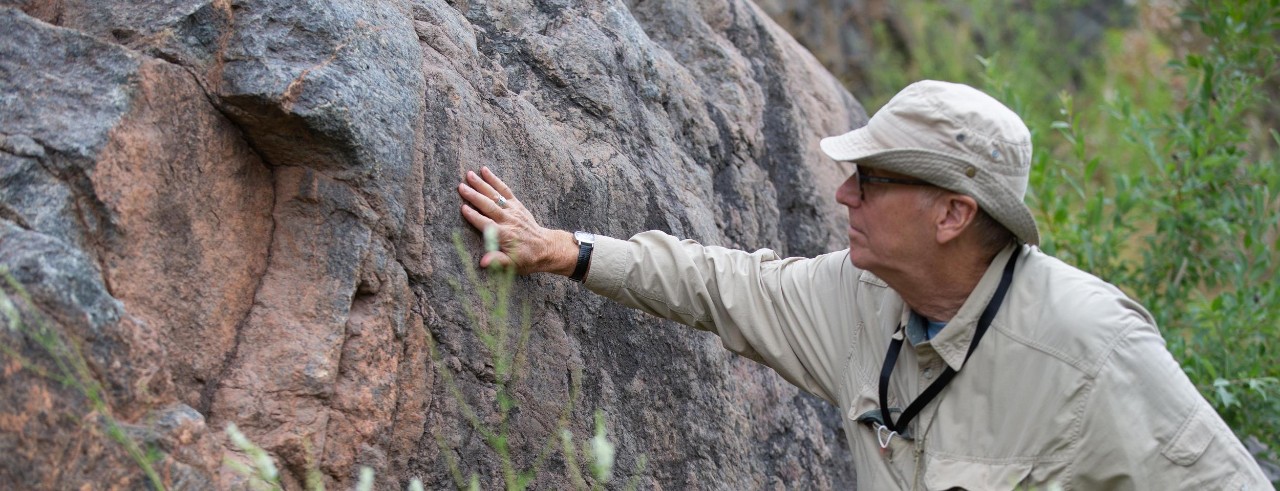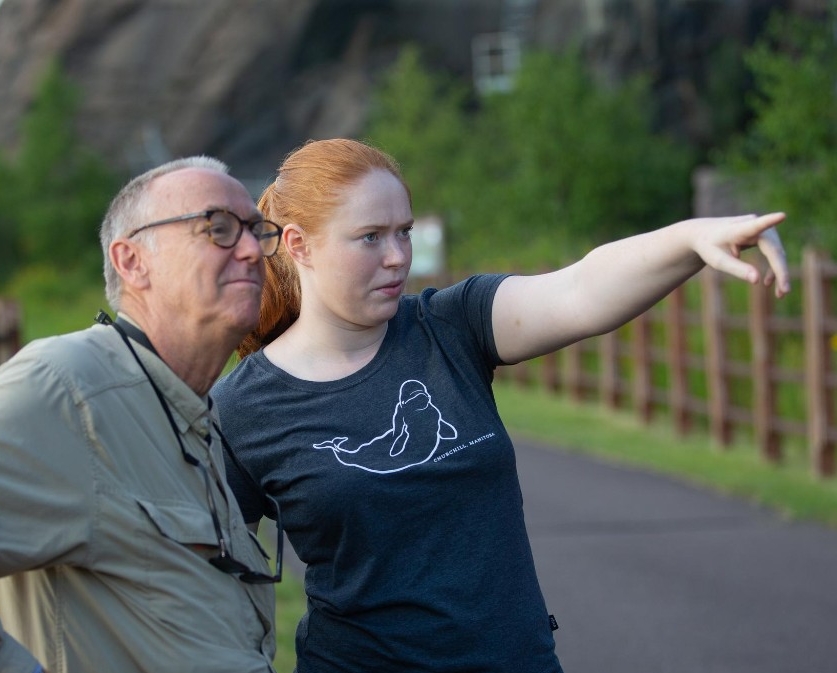
WLW: UC geologist explains local risks from earthquakes
More than 19,000 killed in deadly Turkey earthquake
WLW turned to a University of Cincinnati geologist to explain the earthquake risks in the Midwest after a natural disaster in Turkey and Syria killed more than 19,000 people.
A magnitude 7.8 earthquake on Monday destroyed hundreds of thousands of structures in Turkey and Syria in what the Turkish president described as “the disaster of the century.”

UC associate professor Craig Dietsch leads a geology field trip to Thunder Bay, Ontario. Photo/Andrew Higley/UC Marketing + Brand
UC associate professor Craig Dietsch, head of UC's Department of Geosciences, told 700-WLW's Eddie & Rocky Show that earthquakes occur along known fault lines with no warning.
“Predicting earthquakes is very tricky,” Dietsch told co-hosts Rocky Boiman and Eddie Fingers.
“The fault lines in Turkey are very similar to the San Andreas,” Dietsch said. “They occur where these giant pieces of the Earth's crust are moving around and grinding past one another.”
Dietsch said the largest earthquake recorded in the United States was an 9.2 in southern Alaska in 1964, which generated a tsunami that killed people as far away as California.
“Any earthquake above 7 is a gigantic earthquake,” Dietsch said.
Dietsch leads regular geosciences field trips so students can explore the unique geology of places such as Thunder Bay, Ontario. Read: School of Rocks.
Dietsch said some new buildings in earthquake-prone areas have shock absorbers to help mitigate damage from tremors.
“Everywhere on our planet is under constant stress. If rocks are weak, they tend to slide past each other and you don't get an earthquake,” Dietsch said. “But if two strong rocks are strong, pressure builds up and sooner or later that stress will be released through an earthquake.”
Dietsch said the closest fault to Cincinnati is the Reelfoot Rift in Missouri.
“We live in a pretty seismically safe zone,” Dietsch said.
Listen to the WLW interview on the Eddie and Rocky Show.
Featured image at top: UC associate professor Craig Dietsch examines a cliff face near Duluth, Minnesota, during a 2022 field trip. Photo/Andrew Higley/UC Marketing + Brand
Related Stories
Mother Jones: UC biogeochemist talks about abandoned wells
December 9, 2020
UC associate professor Amy Townsend-Small talks to Mother Jones about the growing list of oil and natural gas wells across America.
Smithsonian: UC student interprets bison 'mummy'
November 2, 2020
UC paleoecologist Joshua Miller and doctoral student Abby Kelly talk to Smithsonian about a rare mummified steppe bison found in Alaska that could improve our understanding of life on Earth 28,000 years ago.
NPR's 1A: UC expert explains risk of leaky gas wells
October 19, 2021
UC associate professor Amy Townsend-Small explains the environmental risk of uncapped natural gas wells in Appalachia.
Earth.com: Dwarf hippos in Madagascar preferred forests
July 14, 2023
Earth.com and other science media highlight UC's discoveries about extinct hippos in Madagascar. An isotopic analysis found that dwarf hippos were not grazers of grasslands but instead preferred sedges and leaves in forests. This demonstrated the importance of forests to endemic wildlife on the island.
UPI: UC geologist photographs oldest known land fossils
January 28, 2021
UC geologist Andrew Czaja was part of an international team that found the world's oldest known land fossils.
Discover: UC professor explains 'slow doom that swept planet'
January 25, 2021
UC geologist Thomas Algeo talks to Discover about the Devonian extinction that killed most life on Earth. Algeo theorizes that the rise of land plants created deadly algae blooms that killed off marine life.
WVXU: UC observatory could help protect drinking water
December 9, 2020
UC hydrogeologist Reza Soltanian is hoping to learn more about how river pollution gets into groundwater using new sensors in UC's groundwater observatory.
WVXU: What are those dents in the forest?
June 29, 2023
UC Associate Professor Dylan Ward explains to WVXU why some forests have terrain that looks like a rumpled blanket over an unmade bed. The answer: limestone sinkholes that created small depressions in the ground.
WLW: UC geologist explains local risks from earthquakes
February 9, 2023
University of Cincinnati geologist Craig Dietsch explains why Turkey earthquake was so deadly.
WVXU: UC finds pollution in ancient Maya reservoirs
August 6, 2020
A study by experts across disciplines at UC found that ancient Maya reservoirs in Tikal were polluted with toxic cyanobacteria and mercury, which likely hastened the demise of the ancient city during droughts. UC biology professor David Lentz tells Cincinnati Edition the findings could help explain the mystery of why people abandoned the city.
